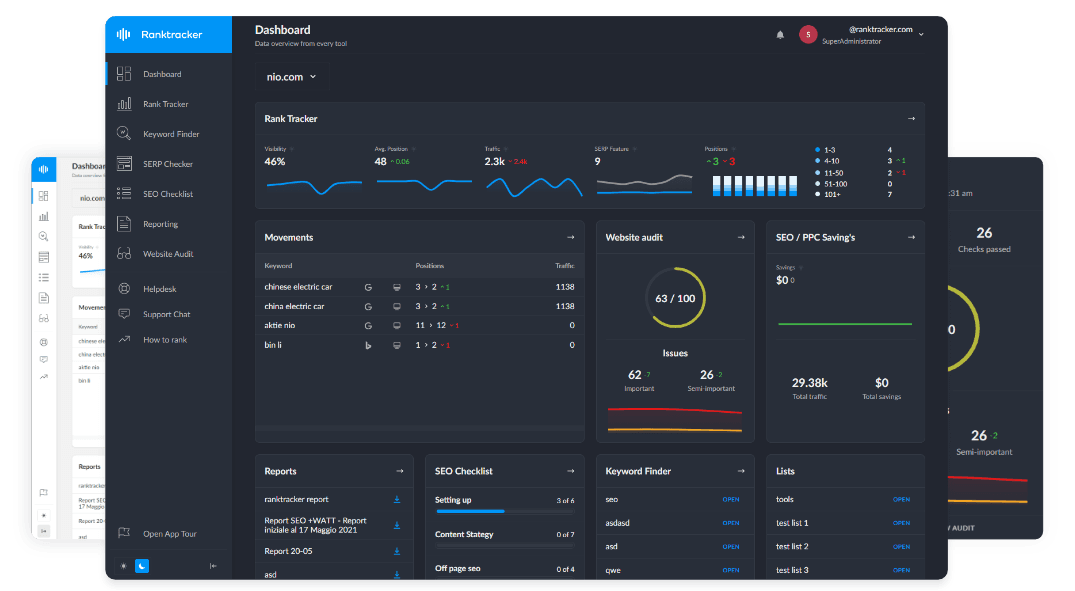Intro
People often wonder about the changing world of search. Some ask why fewer people click on the usual blue links these days. This shift partly comes from new AI technology. However, visitors still need helpful information. They want quick facts without wading through endless pages. This is where recent changes in online behavior come in. Not everyone notices how big this change is, but signs are clear.
Another factor is the rise of specialized platforms. For instance, some readers might search for ways to complete school projects. They might even click on a link like write my paper for me to get a head start. This new habit reveals a turn toward faster, simpler solutions. Many prefer skipping typical search results and going straight to helpful links. There is a growing push to deliver answers at once. That’s what AI is doing now.
In this blog post, we will explore how AI overviews are reshaping the online search game. We will see how new tech lowers classic click-through rates and what that means for future online growth.
The Rise of AI in Search
AI search engine technology has come a long way. It first appeared through voice assistants. Then, it moved into everyday search results. As more stories spread about google ai news, people started to realize that robots were learning how to rank content in new ways. Now, AI sorts results based on context and user behavior. This approach allows search platforms to guess user intent. That means pages appear if they match user needs, not just simple keywords.
Over time, advanced machine learning created better predictions. Sites started to see changing traffic. Fewer users visited them through the usual searches. This shift is tied to google click through rate stats, which show a steady drop over the past years. AI tries to put basic answers on top, so fewer people click away to other sites.
Most users see these updates as helpful. They get fast, direct results. But for websites that depend on traffic, it can be a challenge. AI picks content that it feels is best. That means search engines get people’s attention at the top, leaving less for other links.
Understanding the Declining CTR
Click-through rates (CTR) measure how often people click on a link. In the early days of the internet, top spots on a search result page got plenty of clicks. But times have changed. Now, google ctr study findings suggest fewer clicks in general. Instead, users spend time with featured snippets or instant answers. These new features pop up on the main results page and try to solve queries right there.
Because of that, some websites see drops in traffic. They scratch their heads, wondering why site visits go down even if their ranking is decent. The main cause is how search engines present answers. If a snippet addresses the question, users may not bother clicking to read more. It saves energy and time.
The All-in-One Platform for Effective SEO
Behind every successful business is a strong SEO campaign. But with countless optimization tools and techniques out there to choose from, it can be hard to know where to start. Well, fear no more, cause I've got just the thing to help. Presenting the Ranktracker all-in-one platform for effective SEO
We have finally opened registration to Ranktracker absolutely free!
Create a free accountOr Sign in using your credentials
At first, site owners were excited about ranking well. Yet AI overviews have changed the game. People view short summaries for fast solutions. That is the reason many no longer click as much. This pattern affects companies that need visitors to see their full content.
The Role of AI Monetization
It might seem like search companies place user needs first. But these platforms also rely on ads and other income. AI monetization strategies come into play here. When the search engine uses AI, it can display sponsored ads or quick links right inside those overviews. This setup can draw more eyeballs. It might also reduce visits downstream.
In past eras, businesses had many ways to appear in search. Now, paid positions and AI-driven spots crowd the top of results. This affects websites that rely on organic traffic. Some question whether the shift toward AI placements is just about ease or if it helps these tech giants earn more. Either way, ads creep into more corners of search.
Users may not mind if they get what they want quickly. But the surge of AI monetization means some brands feel squeezed. They lose out on clicks while bigger sites or paid listings stay visible at the top. This dynamic shows the balancing act of satisfying user needs and boosting ad revenue.
Google AI News and Its Influence
Lately, google ai news brings headlines about algorithm changes. These updates affect how content ranks. Some revolve around context-based results or advanced machine learning. Others focus on voice-driven requests. Each revision, big or small, can change how searchers interact with the web.
When big changes hit, marketing experts track the drop or rise in clicks. More details often come from google click through rate stats that highlight popular search terms. Some terms get heavy traffic, while others become less visible. This leaves site managers guessing what strategy works. They must adjust content to rank for emerging AI-driven queries.
Many people want a direct, short answer. That’s where Google’s AI tries to shine. It scrapes enough text to solve basic questions on the results page. The user might never check any other resource. While that helps them quickly, it lowers overall clicks for site owners. This is why many wonder what the future holds, given these news changes.
The Emergence of AI Search Engines
Beyond Google, other AI search engine platforms are entering the mix. Some promise better privacy or more intelligent features. They might use advanced natural language processing or improved image matching. Users notice that these engines deliver quick replies, saving them from scrolling through many pages.
As these new platforms gain ground, there is a bigger question. Do they cut into Google’s share or just fit into a smaller niche? Either way, search patterns are transforming. People enjoy fast details from any site or engine that can provide them.
The All-in-One Platform for Effective SEO
Behind every successful business is a strong SEO campaign. But with countless optimization tools and techniques out there to choose from, it can be hard to know where to start. Well, fear no more, cause I've got just the thing to help. Presenting the Ranktracker all-in-one platform for effective SEO
We have finally opened registration to Ranktracker absolutely free!
Create a free accountOr Sign in using your credentials
With variety comes increased competition for attention. Each AI-driven platform draws new visitors looking for less clutter. Some also emphasize user-friendly ads. Others highlight AI monetization differently, letting advertisers place messages seamlessly. Regardless of the details, one pattern remains: more immediate snippets and fewer final clicks.
Site owners need to stay sharp. They might not ignore these upstart AI tools, because the search landscape changes fast. Today, it’s not enough to rank on Google alone. They must note other AI engines that might win over a certain crowd.
Responding to the CTR Shift
For marketers, the decline in clicks raises important questions. Do they keep relying on simple keywords, or try new approaches? One idea is focusing on deeper engagement. When the search engine displays a snippet, it should spark curiosity. If visitors want more, the site must deliver extra value.
Another strategy includes adapting content for voice search, since many now talk into their phones and get direct results. Short, clear answers that fit AI tools can help. But that alone might not fix the drop in traffic. Marketers also look to social media and email campaigns to attract people who skip the usual search.
Some businesses have turned to direct partnerships with AI platforms. That might involve structured data that fits snappy results. Others have studied google ctr study research to find hidden spots still drawing links. In any case, the goal remains: keep brand visibility high despite evolving search habits. Adjusting to these changes can help sites survive and even grow.
Impact on Content Creators
Writers, video producers, and bloggers also feel the shift. They put a lot of effort into making articles that attract visitors. But if AI strips away vital snippets, fewer people read the full piece. This can affect ad revenue or brand recognition. Some wonder if they need to create shorter content that hits the top snippet.
The upside is that competition can foster creativity. Content creators might try new ways to stand out, maybe by offering rich visuals, interactive features, or helpful extras. They might also pivot to specialized audiences. If a site covers rare topics, it might attract readers who need in-depth knowledge.
Still, the biggest hurdle is the rise of quick answers. People want information fast. If you don’t catch their attention right away, they leave. That’s why some creators use advanced optimization. They place the best facts at the beginning. That way, if a snippet appears, it points back to them. Continual adaptation is key.
The Future Outlook
As AI continues to grow, more changes lie ahead. Some predict that the decline in standard clicks will keep steady or even speed up. Meanwhile, marketers will branch out to new channels. Social media, video-sharing platforms, and direct newsletters might become the next big spots to gather fans. The old habit of chasing top search rankings might fade if those spots no longer yield results.
The All-in-One Platform for Effective SEO
Behind every successful business is a strong SEO campaign. But with countless optimization tools and techniques out there to choose from, it can be hard to know where to start. Well, fear no more, cause I've got just the thing to help. Presenting the Ranktracker all-in-one platform for effective SEO
We have finally opened registration to Ranktracker absolutely free!
Create a free accountOr Sign in using your credentials
Even so, the human touch still matters. People are more than just data. They like personal stories, fresh views, and new ideas. That means not everything can be reduced to a short snippet. Long-form pieces might see loyal readers if they answer deeper questions. The real challenge is discovering how to blend short AI-friendly bits with full-length content.
No one can predict every detail, but the path is becoming clearer. AI overviews will keep dominating, and google click through rate stats might continue to dip. Brands that adapt and stay open to new trends can still thrive. Innovation and audience focus remain crucial.
Conclusion
The internet never stays the same for long. Traditional click-through rates might keep falling, but that doesn’t mean the end for everyone. As AI search engine tools improve, content creators, site owners, and marketers must figure out how to stay relevant. They might refocus on building stronger loyalty, making shareable content, or using other outreach methods.
Some wonder if this shift is entirely good for users. AI overviews let people find quick facts with no effort. Others worry that fewer clicks mean less chance to explore deeper material. For example, specialized reports or creative writing might go unseen if a snippet says it all. That’s the flip side of instant answers.
Still, technology pushes forward. The pull of ai monetization and the rise of new platforms guarantee that competition will stay fierce. Change is a given in today’s environment. The best approach is to watch the trends, test new methods, and adapt with care. After all, the power of knowledge lies in how creators and readers connect.

